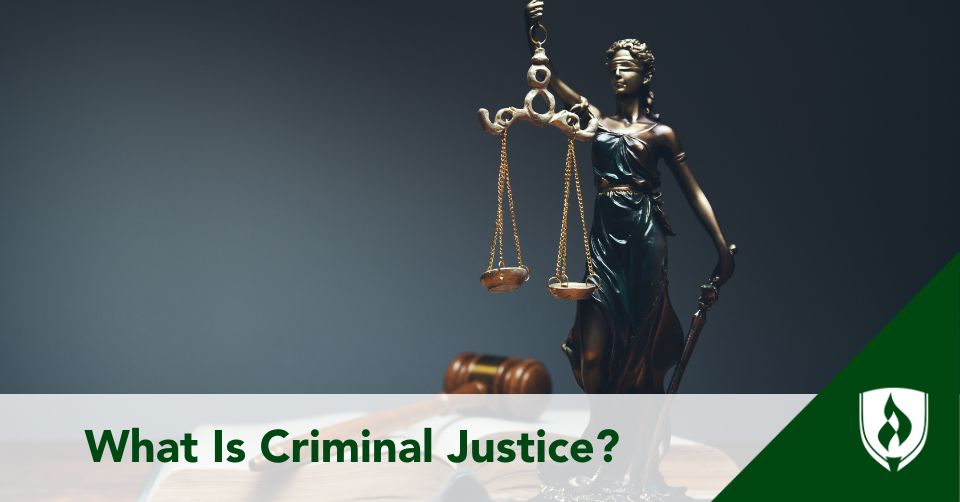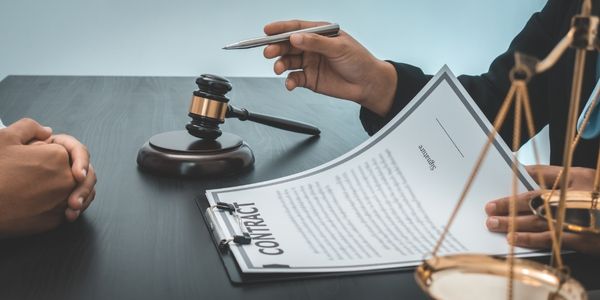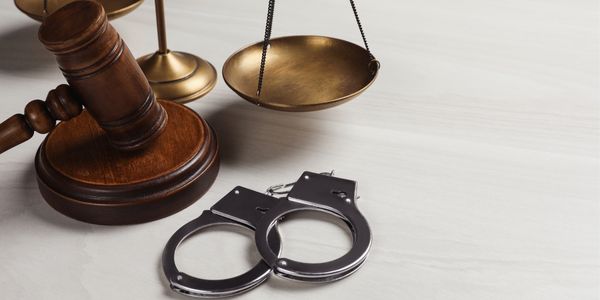What Is Criminal Justice?
08/12/2025

If you’ve ever wondered how laws are enforced, what happens after someone is arrested, or why the court system works the way it does, you’re already asking important questions about criminal justice.
So what is criminal justice? Criminal justice refers to the network of institutions1, policies, and practices that governments use to maintain social order, respond to crime, and ensure legal fairness, which is often studied in a criminal justice degree program. This system includes law enforcement, the judicial system, and correctional facilities, each with its own responsibilities, challenges, and impact on society.
If you’re curious about the criminal justice system itself or exploring criminal justice programs for your education, understanding the field is a key first step.
A Brief History of Criminal Justice
American criminal justice has developed not only through legal institutions but also through strong public influence. In Popular Justice, historian Samuel Walker describes how democratic forces like elected officials, public opinion, and jury participation have consistently shaped how justice operates in the U.S. From colonial times through the 19th century, informal community-based enforcement gradually gave way to professional systems, including organized police departments, prisons, and courts. These shifts reflected a growing need to structure the justice system to serve a larger, more complex society.
However, Walker argues that popular control has been a double-edged sword. While it has made the system more responsive to public concerns, it has also led to uneven enforcement, political pressure on legal actors, and at times, discriminatory practices. The 20th century brought efforts to professionalize the justice system through standardized procedures and due process reforms. but these efforts often conflicted with populist demands for swift, punitive action. This tension continues to influence how justice is understood and applied today.
Three Core Components of the Criminal Justice System
The criminal justice system is often divided into three major areas1: Law enforcement, the court system, and corrections. Together, these institutions carry out the work of the justice system, from committing crimes to responding to crime scenes to supervising individuals after sentencing.
Law Enforcement
Law enforcement officers, such as police officers, detectives, specialized units are often the first point of contact in the criminal justice process. Law enforcement officer duties2 range from investigating crimes and documenting reports to taking witness statements and compiling evidence. Officers are also responsible for apprehending suspects and working to prevent crime through community engagement and public safety strategies.
While many imagine patrol cars and emergency responses, much of police work also involves3 preventative efforts, like neighborhood outreach and addressing local issues before they escalate. Whether you're interested in becoming a private investigator, a probation officer, or working in homeland security, law enforcement roles are foundational to those interested in a criminal justice major.
The Court System
Once a person is charged with a crime, their case moves into the court system.4 Here, judges, prosecutors, and defense attorneys work to determine whether the accused is guilty or innocent, following principles of due process and criminal procedure.
Courts in the U.S. function at both the state and federal levels.4 State courts handle the majority of trial-level cases, while federal courts focus on matters that involve constitutional law or federal statutes. The federal court system includes district courts, courts of appeals, and, at the top, the U.S. Supreme Court.
This stage emphasizes legal analysis and case-building,4 with some students pursuing careers as forensic psychologists, legal analysts, or even working in court administration after earning a bachelor's degree or master’s degree in a related field such as political science or criminal justice.
Corrections
After sentencing, individuals may enter the corrections system5, which includes jails, prisons, probation, or parole, where various crime prevention strategies can be implemented. Correctional institutions aim to both protect the public and manage offenders through supervision, programs, and legal restrictions. This stage involves correctional officers, social workers, and case managers who supervise rehabilitation and reintegration efforts.
Modern corrections increasingly recognize6 that rehabilitation, rather than punishment alone, can reduce recidivism and support long-term public safety. Correctional facilities across the U.S. are experimenting with innovative, trauma-informed programs designed to address the underlying causes of criminal behavior and promote personal growth.
One example6 is the W.O.R.T.H. program (Women Overcoming Recidivism Through Hard Work) at York Correctional Institution, a maximum-security women’s prison in Connecticut. Launched in 2018, this initiative rooted in restorative justice is the only Restoring Promise site housed in a women’s facility. The program pairs eight staff members with a group of 30 young adult women, guided by eight peer mentors who help create a supportive, rehabilitative community. Instead of only focusing on confinement, W.O.R.T.H. emphasizes personal development, accountability, and preparation for reintegration, representing a shift from punishment to rehabilitative services that protect citizens and promote long-term change.
The Criminal Justice Process from Investigation to Appeal
The criminal justice process typically includes the following stages:7
- Investigation and arrest: Evidence is gathered, often with help from forensic science or a crime scene investigation.
- Charging and arraignment: Prosecutors formally file charges; the accused is notified of their rights and charges.
- Trial and verdict: A court determines guilt or innocence based on legal proceedings and criminal procedure.
- Sentencing and appeals: If convicted, the individual is sentenced. Appeals can challenge the legal fairness of the outcome.
Each step is shaped by laws, policies, and the foundational belief in due process, the right to a fair and impartial legal process. Students in criminal justice courses explore these stages in depth, building a deeper understanding of how legal systems function and evolve.
Today’s Criminal Justice System Challenges
Modern criminal justice is more than procedure, it’s deeply connected to larger social and ethical questions.
Disparities in the System
Racial and ethnic disparities8 persist throughout the U.S. criminal justice system, with people of color — particularly Black, Hispanic, and Native American individuals — facing higher rates of stops, arrests, incarceration, and harsher sentencing. In response, states are adopting measures like demographic data collection, bias training, and oversight initiatives to identify and reduce systemic inequities and promote public safety.
Cybercrime
The legal system faces mounting challenges in addressing cybercrime, as criminals exploit global connectivity, outdated laws, and complex technologies that outpace traditional enforcement. To ensure justice in the digital age, criminal justice professionals may promote legal frameworks that must evolve rapidly, balancing international cooperation, technological adaptability, and the protection of individual rights.
Reform Efforts
Across the country, reform movements are advocating for changes in areas like sentencing laws, police accountability, and juvenile justice. These conversations are shaping how communities and policymakers think about public safety and justice.
Criminal justice reform advocates like the Equal Justice Initiative are challenging mass incarceration9 and excessive punishment, particularly for children and marginalized communities, through litigation and policy work aimed at ending practices like overuse of solitary confinement and reducing death penalty applications. They also aim to improve prison conditions and support re-entry initiatives and sentencing reforms, engaging in bipartisan efforts such as the First Step Act to reduce prison populations and expand educational programming.
These changes are gradually reshaping9 how the public and policymakers think about criminal justice jobs, rehabilitation, and the role of the state in managing justice.
Studying Criminal Justice
Many people begin their educational journey by enrolling in a criminal justice program or exploring what it means to study criminal justice. Whether you're pursuing an associate degree program, a college degree, or a doctorate degree, there are a range of options for those who want to study criminal justice. Through higher education justice studies programs,10 students explore topics like criminal behavior, criminal law, forensic psychology, and crime scene investigation.
Students with a high school diploma can begin11 with an associate degree, and continue toward an undergraduate degree, bachelor’s degree, or even graduate-level work depending on their interests and goals.
Programs typically combine general education courses with specialized classes on law, public policy, and investigative techniques. This combination helps students develop a deeper understanding of how the justice system works and why it matters.
Understanding the Bigger Role of Criminal Justice
Criminal justice is more than just police work or courtrooms. It’s a living, evolving system that reflects society’s efforts to protect rights, reduce harm, and respond to wrongdoing. If you're exploring the idea of a criminal justice degree program or just curious about how the system works, learning about this field is a powerful way to become a more informed and engaged citizen.
As communities seek to solve crimes, reduce recidivism, and improve crime prevention, a strong grasp of the American judicial system is vital. Through education, engagement, and reform, we move toward a system that better serves both private citizens and those who work to uphold the law.
Discover Your Path in Criminal Justice
Ready to explore your options? Learn more in "What Can You Do with a Criminal Justice Degree?" and discover the diverse career opportunities this field offers.
1U.S. Department of Justice, Office of Justice Programs, "Functions of Criminal Justice Procedures, Tasks, and Personnel," NCJRS Virtual Library, https://www.ojp.gov/ncjrs/virtual-library/abstracts/functions-criminal-justice-procedures-tasks-and-personnel (accessed June 30, 2025).
2Bureau of Justice Statistics, "Law Enforcement," https://bjs.ojp.gov/topics/law-enforcement (accessed June 30, 2025). Employment conditions in your area may vary.
3U.S. Bureau of Labor Statistics, "Police and Detectives," Occupational Outlook Handbook, https://www.bls.gov/ooh/protective-service/police-and-detectives.htm#tab-2 (accessed June 30, 2025). Employment conditions in your area may vary.
4U.S. Courts, "Comparing Federal and State Courts," https://www.uscourts.gov/about-federal-courts/court-role-and-structure/comparing-federal-state-courts (accessed June 30, 2025).
5Bureau of Justice Statistics, "Correctional Institutions," https://bjs.ojp.gov/topics/corrections/correctional-institutions (accessed June 30, 2025). Employment conditions in your area may vary.
6National Institute of Justice, "Transforming Correctional Culture and Climate," https://nij.ojp.gov/topics/articles/transforming-correctional-culture-and-climate (accessed June 30, 2025).
7Bureau of Justice Statistics, Image ID 45506, https://bjs.ojp.gov/media/image/45506 (accessed June 30, 2025). Employment conditions in your area may vary.
8National Conference of State Legislatures, "Racial and Ethnic Disparities in the Criminal Justice System," https://www.ncsl.org/civil-and-criminal-justice/racial-and-ethnic-disparities-in-the-criminal-justice-system (accessed June 30, 2025).
9Equal Justice Initiative, "Criminal Justice Reform," https://eji.org/criminal-justice-reform/ (accessed June 30, 2025).
10Rasmussen University, "Justice Studies Degree Overview," https://www.rasmussen.edu/degrees/justice-studies/ (accessed June 30, 2025).
11U.S. Bureau of Labor Statistics, "Police and Detectives: Job Outlook," Occupational Outlook Handbook, https://www.bls.gov/ooh/protective-service/police-and-detectives.htm#tab-4 (accessed June 30, 2025). Employment conditions in your area may vary.



